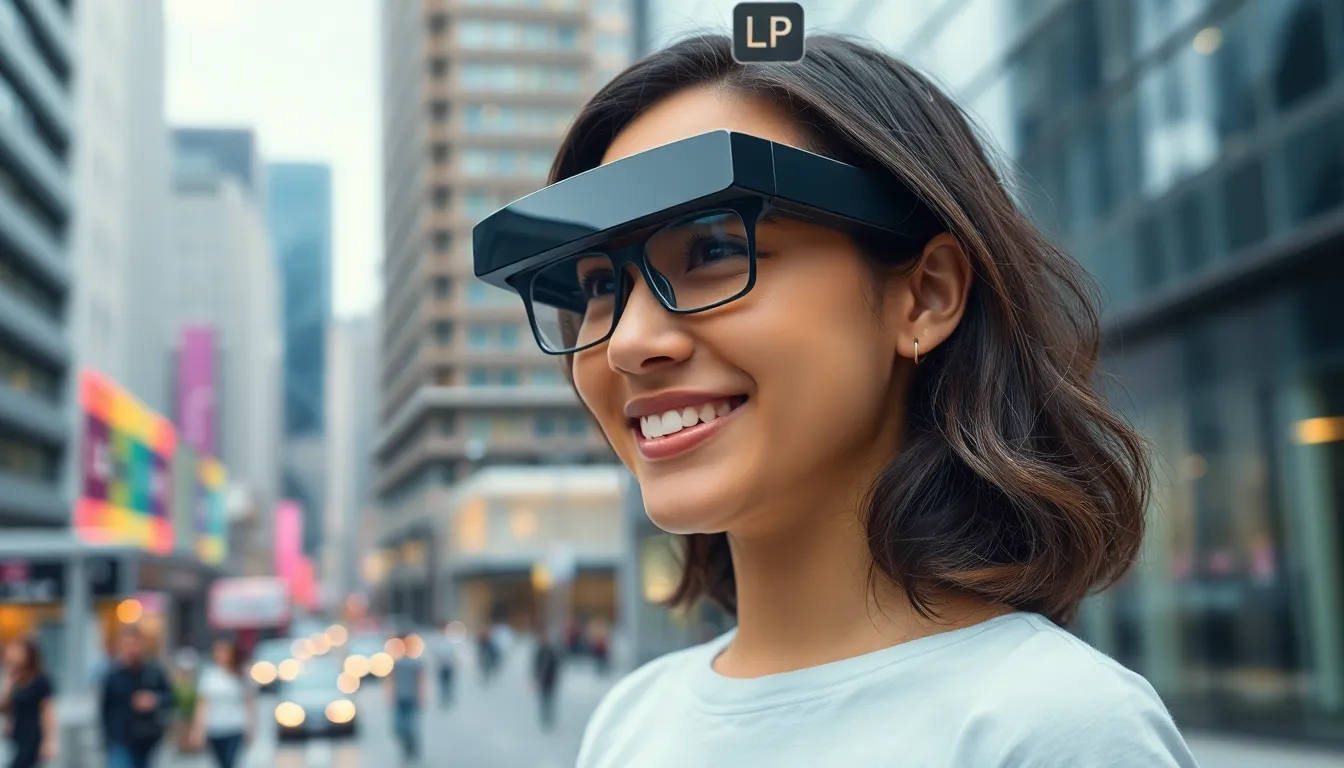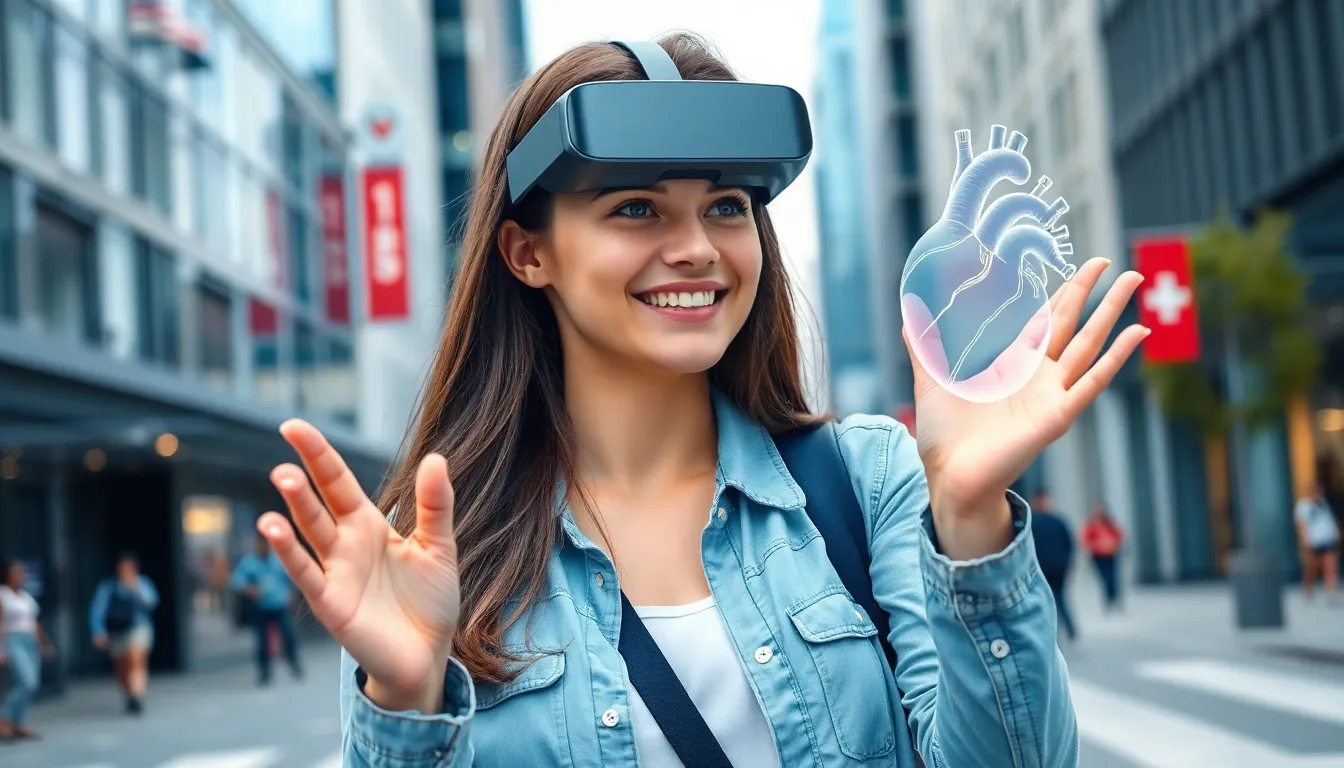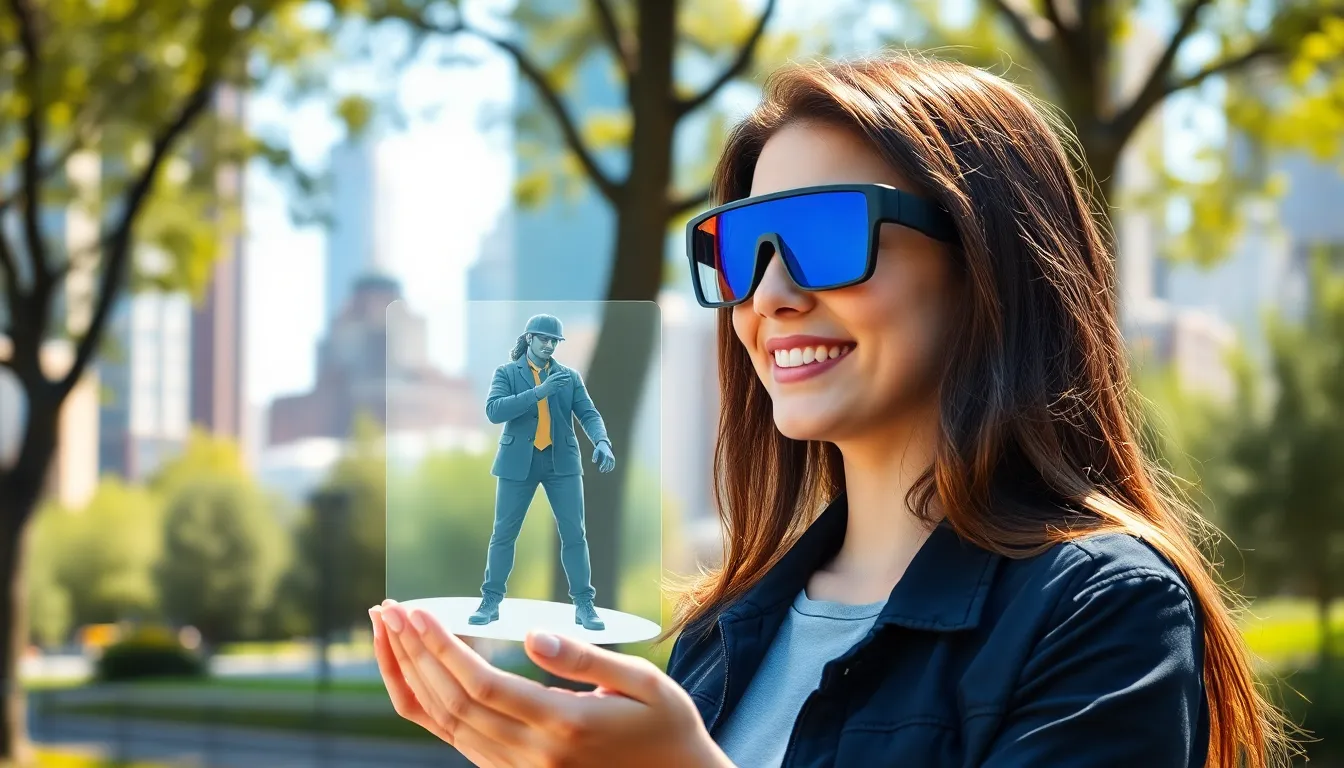Imagine walking down the street and suddenly stepping into a world where your favorite products leap off the shelves and into your hands—without ever setting foot inside a store. That’s the magic of storefront AR, where augmented reality transforms the shopping experience into an interactive adventure. It’s like having a personal shopping assistant who’s always in the mood for fun.
Table of Contents
ToggleOverview Of Storefront AR
Storefront augmented reality (AR) enhances the shopping experience by allowing consumers to visualize products in their environment. Brands can use AR technology to create interactive experiences that engage customers and showcase products in a unique way. Shoppers can access these experiences via mobile devices, making the technology accessible and convenient.
Retailers often leverage storefront AR to simulate in-store shopping without the need for physical presence. Customers can try on clothing virtually, place furniture in their homes, or preview how certain items look in various settings. Utilizing AR increases consumer confidence in their purchasing decisions, as they gain a better understanding of how products fit their needs.
Numerous studies highlight the positive impact of AR on sales and customer satisfaction. Reports indicate that 71% of consumers would shop at a retailer more often if they offered AR experiences. Increased interaction leads to higher engagement rates, ultimately influencing purchase behavior.
Storefront AR represents a noteworthy shift in retail strategies. Businesses adopting this technology frequently see enhanced brand loyalty and customer retention. As consumers gravitate toward innovative shopping experiences, storefront AR positions itself as a valuable tool for retailers aiming to stay competitive.
This technology provides opportunities for creative marketing campaigns, enhancing the ability to reach a wider audience. As retailers continue to embrace digital transformation, AR serves as a critical element, merging physical and digital retail spaces seamlessly.
Benefits Of Storefront AR

Storefront AR offers significant advantages, reshaping how consumers shop and interact with products. Improved customer experiences and heightened engagement represent two primary benefits.
Enhanced Customer Experience
Enhanced customer experiences arise from the ability to visualize products in realistic settings. Shoppers can see how clothing fits or how furniture complements their home decor without visiting a physical store. This immersive interaction increases consumer confidence in purchasing decisions. As a result, retention rates improve when customers feel assured about their choices. With storefront AR, retailers provide a unique, personalized experience that aligns with evolving shopping preferences. The convenience of trying products virtually from anywhere caters to the demand for flexibility and accessibility in shopping.
Increased Engagement
Increased engagement manifests through interactive features that capture consumer attention. Retailers benefit from integrating games, quizzes, or other interactive elements that motivate consumers to explore products further. As shoppers interact with AR elements, they spend more time connecting with brands, which can lead to higher conversion rates. Engagement metrics highlight that 71% of consumers prefer shopping with brands that offer AR experiences. Retailers leveraging this technology can create memorable experiences that bolster brand loyalty. Consumers are drawn to innovative solutions that enhance their shopping journey, making AR an essential tool for fostering long-term connections.
Challenges Of Implementing Storefront AR
Implementing storefront augmented reality (AR) presents distinct challenges. Retailers encounter obstacles that can affect the adoption of this innovative technology.
Technical Limitations
Technical limitations pose significant hurdles for storefront AR. Many retailers struggle with integration into existing platforms. Incompatibility with various devices can lead to inconsistent customer experiences. Data connectivity issues can disrupt AR functionality, causing delays or failures in real-time interactions. Moreover, developing high-quality AR content requires advanced skills and resources, making it daunting for smaller retailers to compete.
Cost Considerations
Cost considerations often deter retailers from adopting storefront AR. High costs associated with AR development can strain budgets, especially for small businesses. Significant investment is necessary for hardware and software upgrades to support AR solutions. Creating and maintaining AR content involves ongoing expenses that some retailers find prohibitive. Return on investment remains uncertain, making it essential for retailers to carefully evaluate potential costs against expected benefits.
Future Trends In Storefront AR
Storefront augmented reality continues to evolve rapidly, promising exciting developments for both consumers and retailers. Emerging trends reflect the increasing sophistication and integration of this technology.
Advancements In Technology
Improvements in AR hardware and software drive a more immersive shopping experience. Enhanced smartphone capabilities enable better AR applications, allowing seamless interaction and quicker load times. Emerging technologies like 5G improve data transfer rates, which ensures real-time visualization without lag. These advancements empower retailers to create richer, more interactive content that captures consumer interest effectively. Solutions that employ artificial intelligence further personalize product recommendations, increasing the relevance of displayed items.
Integration With E-Commerce
Stronger connections between storefront AR and e-commerce platforms offer a more streamlined shopping experience. This integration allows consumers to move seamlessly between virtual and physical environments, bridging the gap between browsing and buying. Retailers increasingly utilize AR to enhance online catalogs, encouraging customers to visualize products in their own space before purchase. Enhanced user interfaces allow for easy navigation and checkout, boosting customer satisfaction. Statistics indicate that brands incorporating AR into e-commerce can see significant increases in conversion rates, reflecting the growing consumer preference for these innovative shopping tools.
Storefront AR is revolutionizing the retail landscape by creating immersive shopping experiences that resonate with today’s consumers. As technology evolves retailers must embrace these innovations to stay competitive. The ability to visualize products in real-world settings not only boosts consumer confidence but also fosters brand loyalty.
While challenges exist in implementation and cost, the potential benefits far outweigh the obstacles. With advancements in AR technology and integration with e-commerce platforms the future looks promising. Retailers who adopt storefront AR can expect enhanced customer engagement and increased sales, making it a vital component of modern retail strategies.






